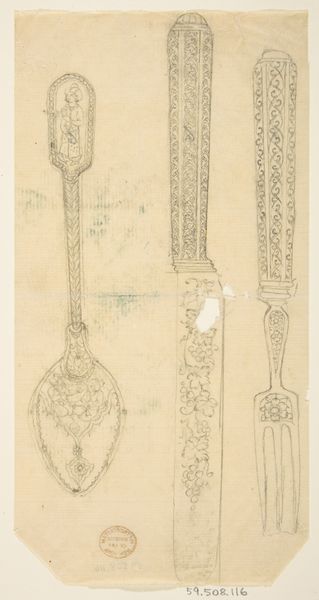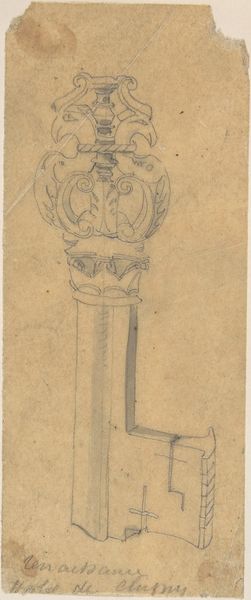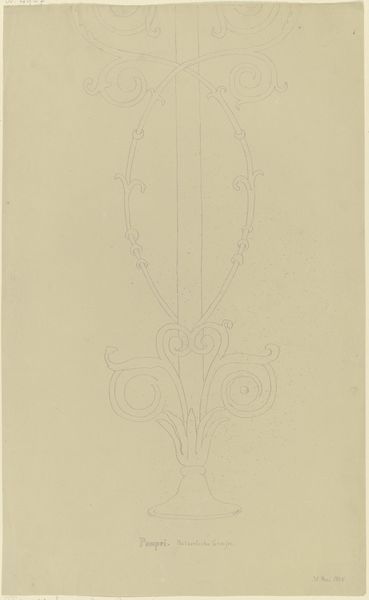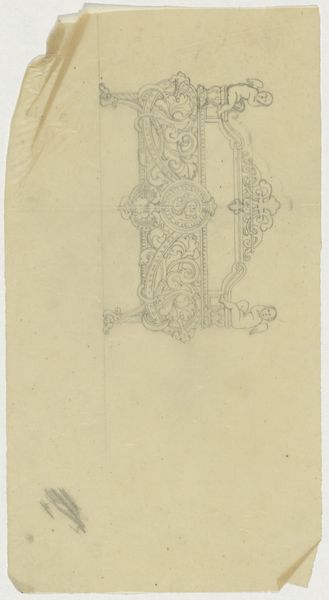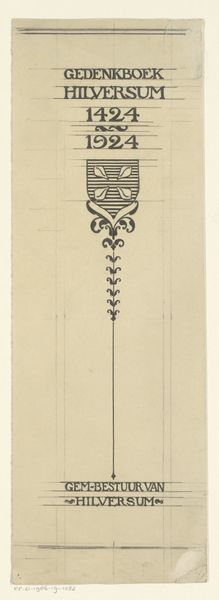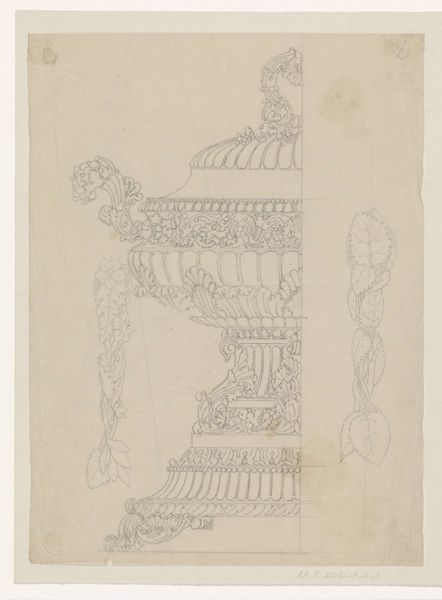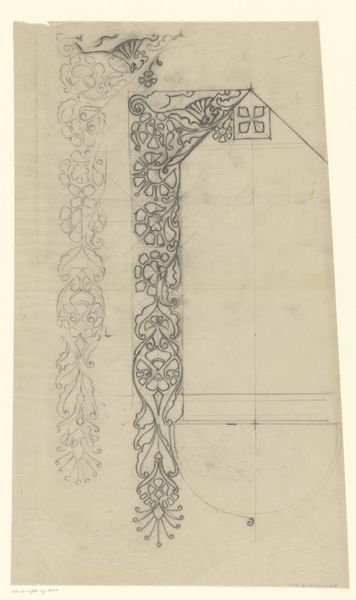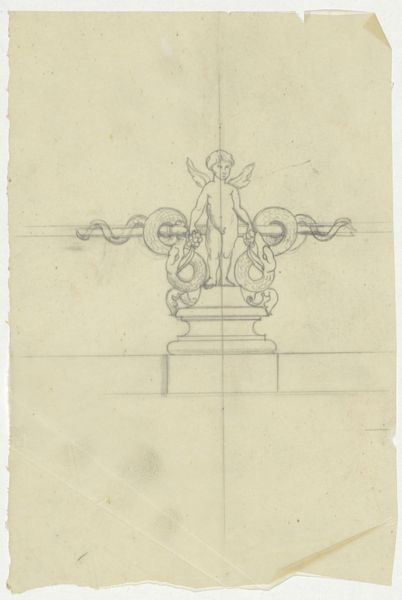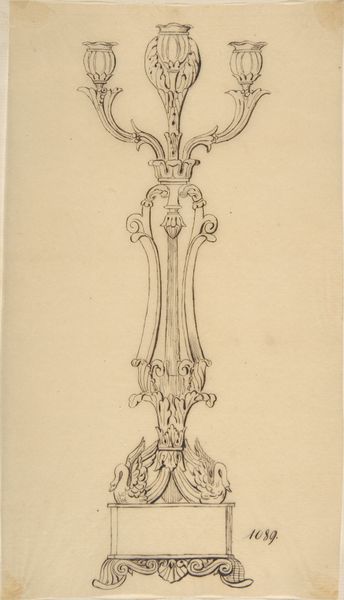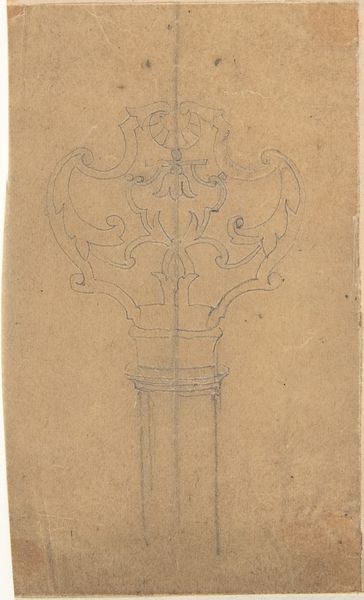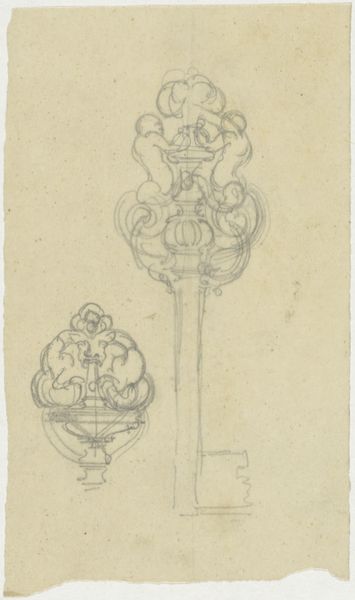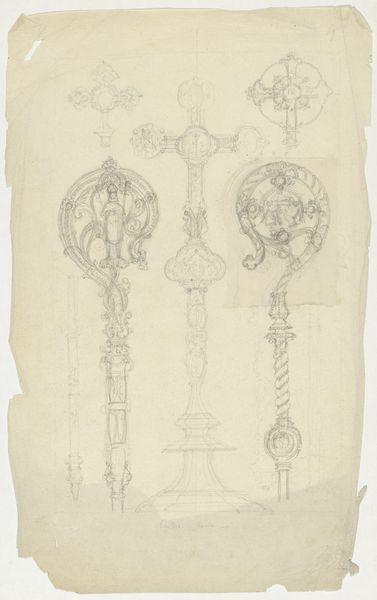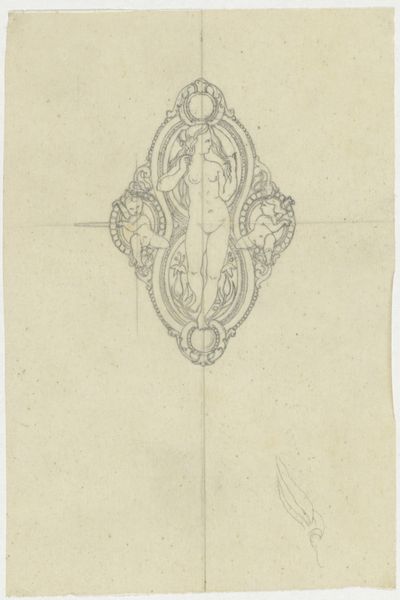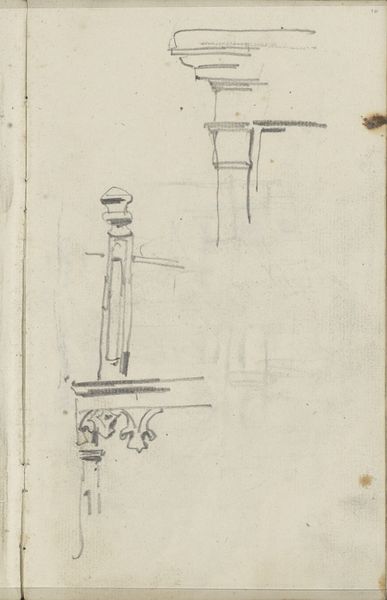
drawing, print, pencil
#
drawing
# print
#
figuration
#
pencil
Dimensions: sheet: 7 13/16 x 2 11/16 in. (19.9 x 6.9 cm)
Copyright: Public Domain
Curator: Here we have an interesting preliminary sketch from the 19th century titled "Design for a Spoon," presently housed at the Metropolitan Museum of Art. It's rendered in pencil, displaying a delicate balance of utilitarian form and ornate figuration. My initial reaction is a whimsical, almost storybook-like charm. The lined paper showing through gives it a very draft-like appearance. Editor: My interest is drawn immediately to the presence of the figure. This design gives us a glimpse into the cultural narratives shaping perceptions of beauty and status in the 19th century, and for whom would an object of adornment like this spoon be made? A design object such as this provides a window onto the ways individuals sought to elevate their domestic rituals through artistic expression and symbolic meaning, the identity of whom is linked to the function of dining. Curator: I agree; and one must ask how it functions as a spoon given the depth of the decorative recess of the "spoon" side. The eye follows a series of distinct sections, from the handle's miniature figure to the swirling motifs filling the spoon's bowl, it's difficult to understand if the form truly follows the function or if form supersedes utility? Editor: It’s likely less about pure utility and more about the symbolic capital such an object could represent. Think about class structures, consumption patterns, and gender roles. Who gets to wield this ornate spoon, and what narratives are projected onto them through its design? Is it an everyday tool or something brought out for formal displays of wealth? It could serve as a powerful emblem for those engaging in such social rituals. Curator: Fascinating point, the gendering of objects. Let's consider that miniature figure adorning the handle, a potential emblem of power dynamics made physical. Is there a certain type of character there in that space, wielding some form of arrow? A playful Cupid or perhaps an allusion to an ancient myth? It complicates our understanding, demanding closer analysis of its period-specific social codes. Editor: Precisely. Objects such as this provide a canvas for cultural anxieties, desires, and aspirations. It challenges us to look at art not merely as an aesthetic creation, but as a microcosm of the power structures in which it's designed and meant to operate. Curator: Viewing it from both angles has opened a portal. A look at design elements and the cultural implications interwoven into this design object’s historical context— it really enriches how one approaches works on paper! Editor: Absolutely, and prompts reflection on whose histories get preserved. By unearthing overlooked or suppressed histories in artworks, one broadens the conversation about value and meaning-making in both art and society.
Comments
No comments
Be the first to comment and join the conversation on the ultimate creative platform.
